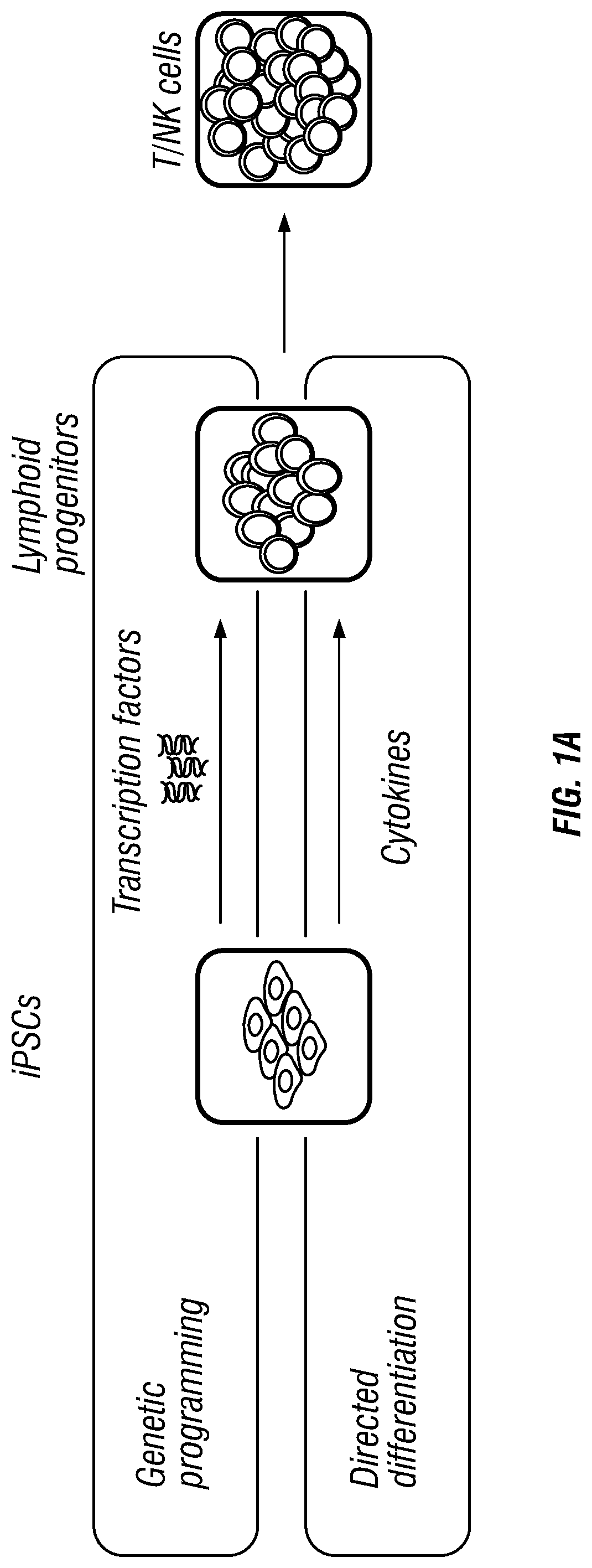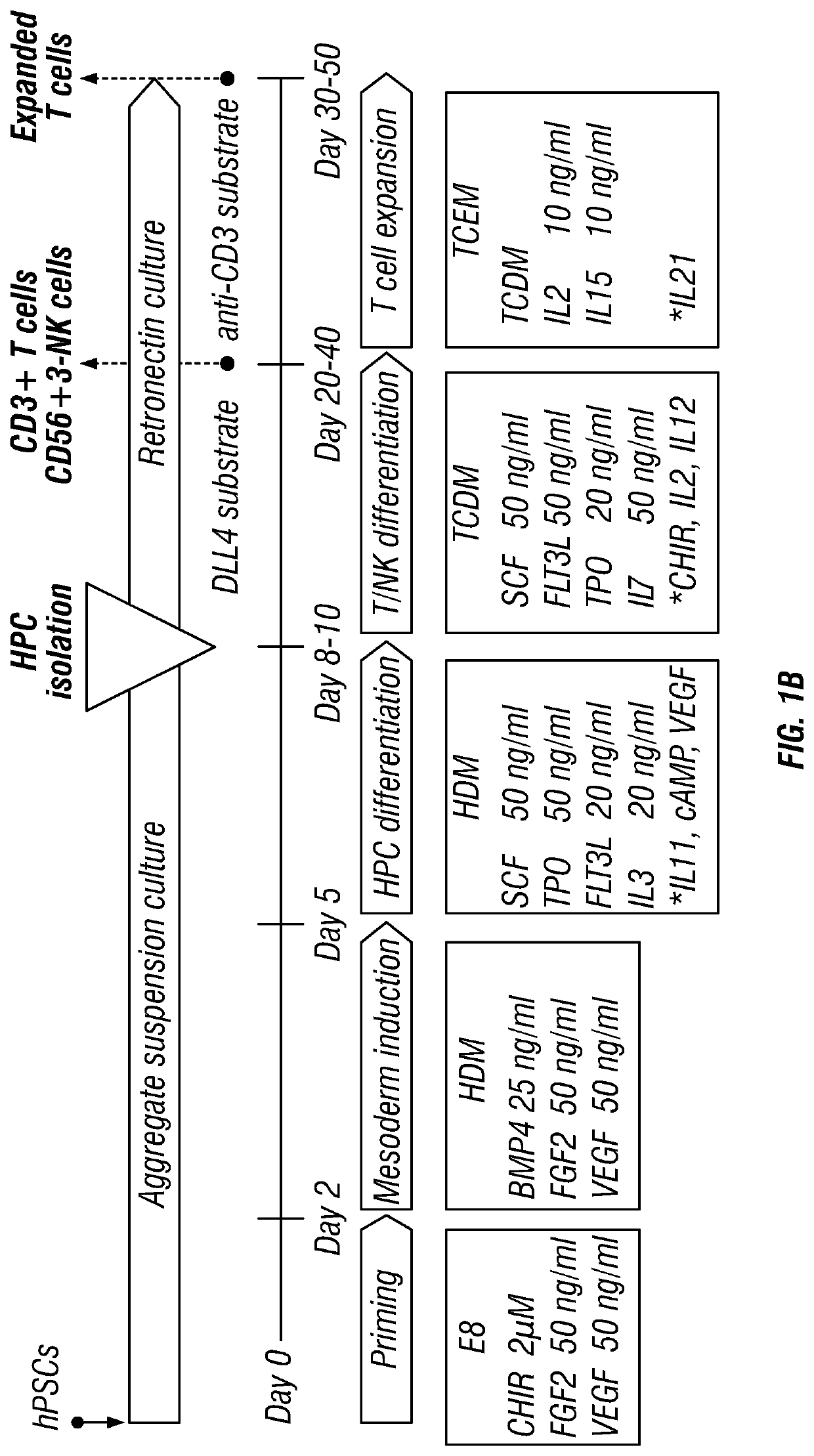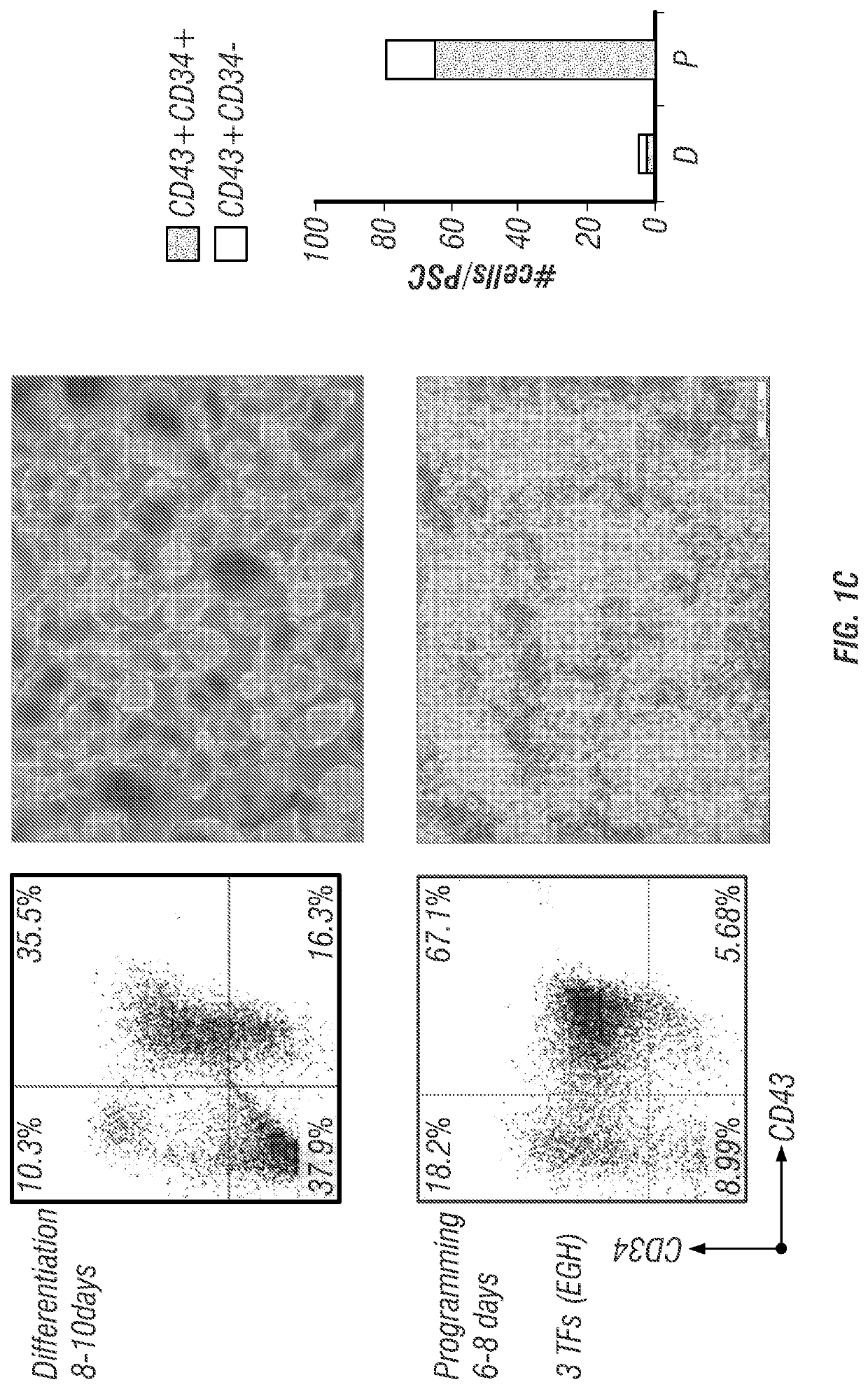Antigen-specific immune effector cells
- Summary
- Abstract
- Description
- Claims
- Application Information
AI Technical Summary
Benefits of technology
Problems solved by technology
Method used
Image
Examples
example 1
n of Anti-CD19 CAR-Expressing PSC-Derived T / NK Cells
[0262]In order to generate pluripotent stem cells which express a chimeric antigen receptor (CAR), two separate methods were used. In one method, transgene-free PSCs were derived from T cells using retroviral vectors to produce IC cells (US20160257939; incorporated herein by reference in its entirety) or epiosomal vectors to produce E11 cells. In the second method, PSCs were transfected with a PiggyBac expression vector encoding hematopoietic programming genes ETV2 / ERG, GATA2, and HOXA9 (engineered H1 ESCs with introduced DOX-inducible ETV2-GATA2-HOXA9 (EGH) hematopoietic programming genes) to produce A16 cells. The PSCs from both methods were then genetically modified to constitutively express a second generation anti-human CD19 chimeric antigen receptor (CAR) composed of the FMC63 mAb-derived human CD19-binding scFv domain, CD28 co-stimulatory domain and CD3ζ signaling domain.
[0263]Non-modified and CAR-modified PSCs were differen...
example 2
[0271]PCS Differentiation to CD34+ Lympho-Hematopoietic Progenitors:
[0272]The T-cell derived PSCs of Example 1 (1C and E11 TiPSCs derived from peripheral blood T cells by retroviral and episomal reprogramming, respectively) were differentiated to CD34+ hematopoietic progenitors through aggregate suspension culture. PSCs were maintained under feeder-free conditions on the Matrigel™- or Vitronectin-coated 6-well plates in Essential 8 (E8) medium. Aggregates were made from sub-confluent PSCs (<80% confluence) at a density of 0.5 million cells per ml in E8 medium supplemented with 2 μM CHIR99021 (GSK-3 inhibitor) and 5 μM blebbistatin (myosin-II inhibitor). Aggregate formation was performed during 6 hours culture in the ultra-low attachment (ULA) flasks under continuous agitation on the rocker platform at 15-20 rpm (including all subsequent culture steps).
[0273]Culture with preformed cell aggregates was gradually transferred to serum-free hematopoietic differen...
example 3
ization of Directed Differentiation Method
[0280]PSCs were first differentiated to CD34+ HPCs in suspension cell aggregate culture through successive steps of WNT-induced differentiation priming, mesoderm induction and HPC differentiation during 8-10 days (FIG. 1B). The HPC fraction was isolated by filtration. No MACs sorting of CD34+ HPCs was performed, although it may be optionally performed using direct CD34 paramagnetic beads (Myltenyi Biotec). HPCs were then transferred to human DLL4-Fc+ retronectin coated plates for T / NK differentiation during 2-4 weeks. T cells could further be expanded during 1-2 weeks in culture on the anti-CD3 mAb (OKT3 clone) coated plates.
[0281]PSC (1C TiPSC)-derived CD34+ cells after 2 weeks in T / NK differentiation conditions developed a typical lymphoid cell population defined by low FSC / SSC parameters (FIG. 1D, left dot-plot). This lymphoid population contained mostly CD3+ T and CD56+CD3− NK cells (FIG. 1D, middle dot-plot). The T cell population inclu...
PUM
| Property | Measurement | Unit |
|---|---|---|
| Fraction | aaaaa | aaaaa |
| Fraction | aaaaa | aaaaa |
| Fraction | aaaaa | aaaaa |
Abstract
Description
Claims
Application Information
 Login to View More
Login to View More - R&D
- Intellectual Property
- Life Sciences
- Materials
- Tech Scout
- Unparalleled Data Quality
- Higher Quality Content
- 60% Fewer Hallucinations
Browse by: Latest US Patents, China's latest patents, Technical Efficacy Thesaurus, Application Domain, Technology Topic, Popular Technical Reports.
© 2025 PatSnap. All rights reserved.Legal|Privacy policy|Modern Slavery Act Transparency Statement|Sitemap|About US| Contact US: help@patsnap.com



